The Daruma Festival at Jindaiji Temple marks the beginning of spring and is named after the monk and founder of Zen Buddhism, Bodhidharma (Daruma in Japanese). Traditionally, people buy dolls at the beginning of each year after burning the old ones from the previous year.
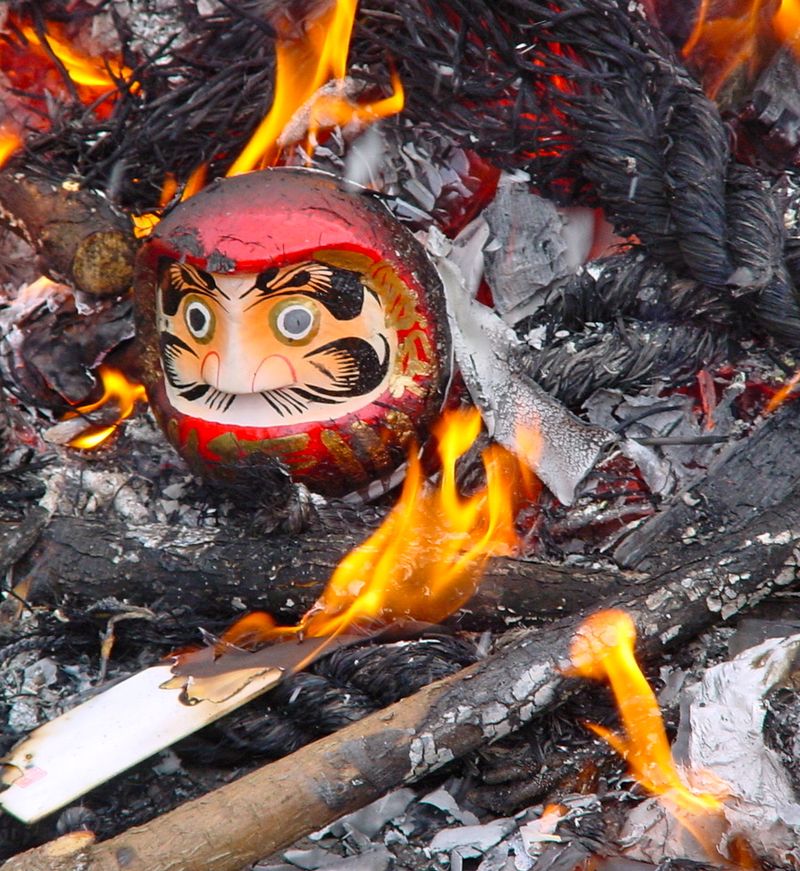
“The Daruma doll is very precious to the Japanese people, but it is not considered a god,” said Chihiro Nakata, a fifth-generation Daruma artist. “Instead, it is a symbol of perseverance and new beginnings.”
Good luck and longevity
Japan has 47 prefectures, each with its own style of doll production. According to the Japan National Tourism Organization, Takasaki City in Gunma Prefecture produces more than 80% of the country's dolls, about 900,000 each year. A famous Daruma shop called Daimonya also produces more than 7,000 talismans each year.

To create the hollow dolls, craftsmen at Daimonya dip a metal mold into liquid papier-mâché. The figurines are left to dry before being buried in sand and coated with white paint. The bottoms are weighted with clay to allow the dolls to stand. Finally, the craftsmen dip the dolls in red paint before adding decorations to their faces.
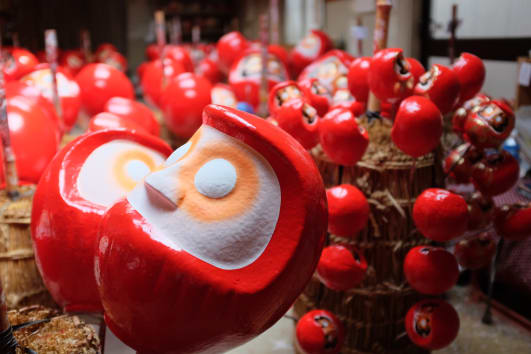
The face is often decorated with images of two animals associated with luck and longevity in Japan: the crane and the turtle. The characteristic feature of the Daruma doll is its large, round eyes that look straight ahead, expressing determination and perseverance. The eyes of the Daruma have no black pupils, so that when the owner of the Daruma has a goal, he will add a black pupil to one eye with a brush. By the end of the year, if the goal is achieved, the other eye will be completed. The Daruma doll is usually placed on a kamidana – a small altar facing south, commonly found in many Japanese homes.
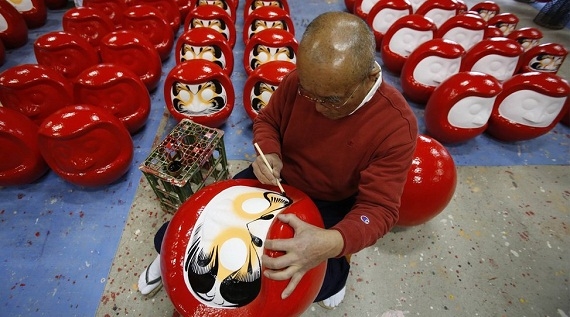
“The Daruma’s right eye should face the rising sun,” Nakata explains. “That symbolizes that at sunset, your wish will be granted.”
A growing tradition
People in Takasaki Prefecture began making and selling the dolls about 200 years ago. They were believed to protect children from smallpox and promote good harvests.
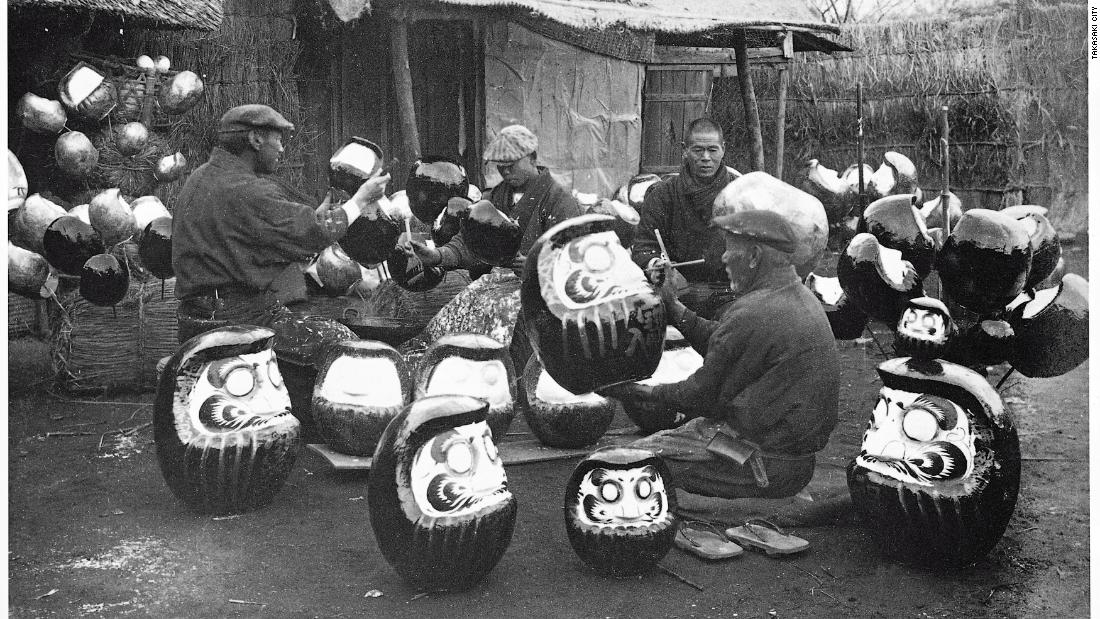
The first Daruma dolls were quite humanoid in appearance. They were modeled after Bodhidharma in meditation and had no limbs, based on an ancient legend that Bodhidharma’s limbs atrophied after nine years of meditation in a cave. The traditional red color has been retained over the years as a protection against smallpox and disease, although this is something that most modern Japanese have forgotten.

According to Hirose Seishi, chief priest at Shorinzan Darumaji Temple in Takasaki, Daruma dolls that bring good luck to their owners must be burned immediately after the New Year.

“When we burn the Daruma dolls, they turn into ashes and return to the ground where they came from,” Seishi told CNN. “Changing your Daruma each year is related to new goals in your life.”
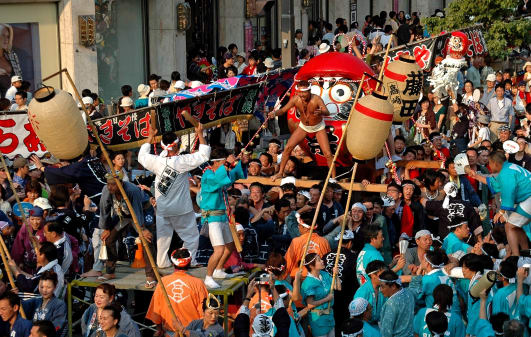
Daruma versions are changing with the times. You can now find modern designs like sporty styles, polka dots, and vibrant colors, not just red. Luck is represented in different shades of colors like pink (symbolizing love), green (representing good health), etc. New colors and designs respond to the changing tastes of today's market, Nakata said.
Ngoc Anh (According to CNNTravel)


































